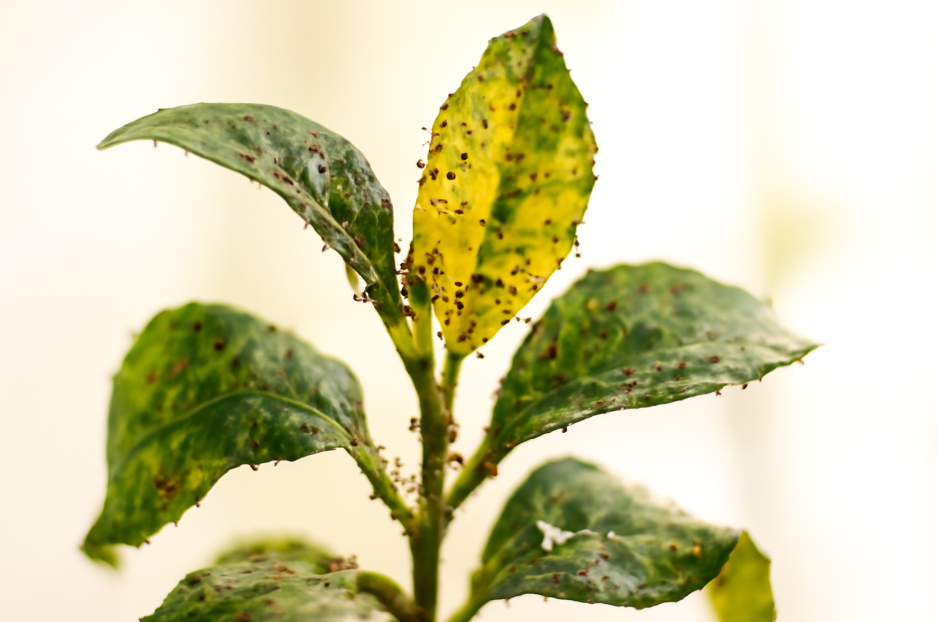
Using Insecticidal Soap on Indoor Plants: The Complete Guide to Safely Eliminating Pests and Keeping Your Plants Healthy
Are pests turning your beautiful indoor plants into a battleground? 🪲 Whether it’s aphids, mealybugs, or spider mites, these tiny invaders can quickly ruin your plant collection, causing yellowing leaves, stunted growth, and even death. But there’s good news! You don’t have to resort to harsh chemicals that could harm your plants or your health. By using insecticidal soap on indoor plants, you can eliminate pests safely and effectively, without compromising your plants’ well-being.
In this guide, we’ll walk you through everything you need to know about insecticidal soap—from how it works and why it’s a plant-friendly option to how to apply it correctly for the best results. Whether you’re a seasoned plant parent or a beginner, you’ll find actionable, step-by-step advice to tackle those pesky pests. Ready to give your indoor garden the protection it deserves? Let’s dive in! 🌿
Table of Contents
ToggleUnderstanding Indoor Plant Pests
Indoor plants are a wonderful way to add beauty and life to your home, but they also attract a variety of pests that can quickly damage or even kill your plants. 😱 Whether you’re a new plant parent or have a seasoned collection, knowing the common pests that invade indoor plants is the first step in protecting your greenery.
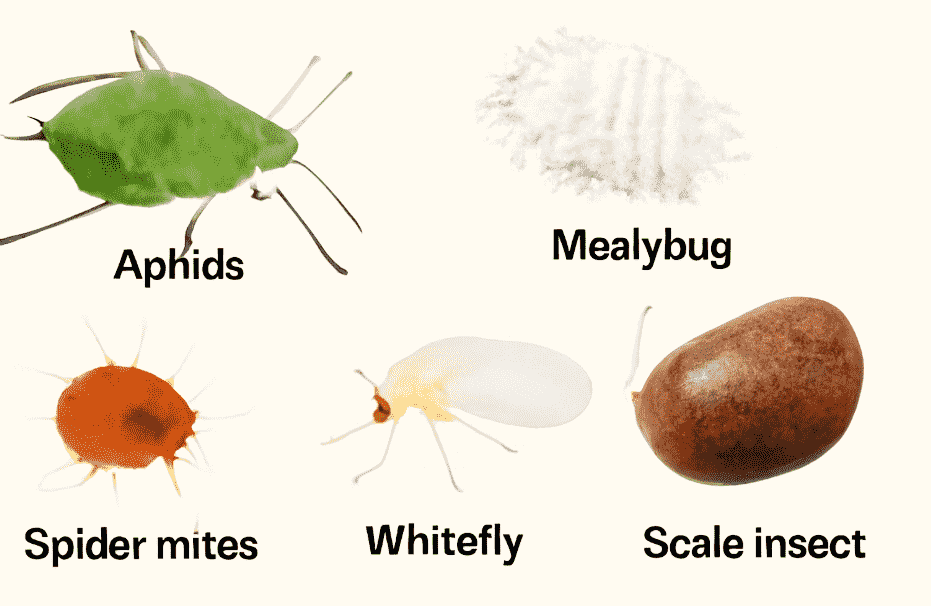
Common Pests That Affect Indoor Plants
- Aphids
These tiny insects are often green or black and feed on plant sap. They can cause leaves to curl and turn yellow, and they produce a sticky substance called honeydew that attracts mold. - Spider Mites
Not actual mites, these pests are very small and leave a fine webbing behind. They are typically red or yellow and thrive in dry conditions. Spider mites suck sap from the leaves, leading to speckled or discolored foliage. - Mealybugs
Mealybugs are soft-bodied, white pests that look like tiny cotton balls. They hide in the crevices of leaves and stems, where they feed on plant fluids. Heavy infestations can cause leaves to wilt and fall off. - Whiteflies
These tiny, white flying insects can be found on the underside of leaves. Whiteflies suck plant sap and can transmit diseases to your plants, causing yellowing leaves and stunted growth. - Scale Insects
Scale insects appear as small, flat bumps on plant stems or leaves. These pests suck the sap from the plant and can cause yellowing, stunted growth, and even dieback if not addressed.
Signs Your Indoor Plants Have a Pest Problem
It’s important to catch pest problems early to prevent widespread damage. Here are some telltale signs:
- Yellowing or Curling Leaves: A common sign that your plant is under attack. Many pests feed on plant sap, causing the leaves to lose nutrients and change color.
- Visible Bugs or Webs: Check both sides of your leaves for signs of pests. Spider mites, aphids, and mealybugs are often visible with the naked eye.
- Sticky Residue or Honeydew: If you notice a shiny, sticky substance on the leaves or surrounding surfaces, it’s likely a sign of aphids or whiteflies feeding and excreting honeydew.
- Wilting or Stunted Growth: If your plant isn’t growing as it should, pests could be the cause of the stress, preventing the plant from absorbing nutrients properly.
Why Indoor Plants Are Prone to Pests
Indoor plants are particularly vulnerable to pests because:
- Lack of Natural Predators: Outdoors, pests are often kept in check by natural predators like birds and beneficial insects. Inside, your plants don’t have these helpers, so pests can thrive.
- Overwatering and Humidity: Pests like aphids and mealybugs are attracted to moist environments. Overwatering can create ideal conditions for pests to multiply.
- Close Proximity to Other Plants: If you’re adding new plants to your collection, they could be carrying pests from a nursery or store. Always quarantine new plants before introducing them to your other plants.
What is Insecticidal Soap?
If you’re dealing with pests on your indoor plants, insecticidal soap is one of the safest and most effective solutions you can use. But what exactly is it, and how does it work?
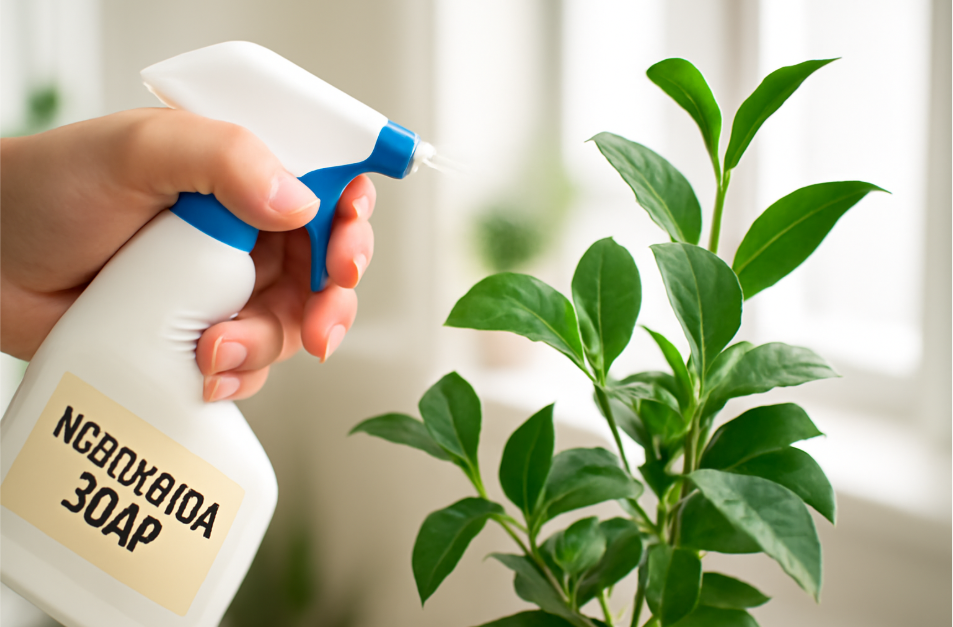
Definition and Composition of Insecticidal Soap
Insecticidal soap is a special type of soap made from potassium salts of fatty acids. It’s a naturally derived product designed specifically to target and eliminate soft-bodied pests, like aphids, mealybugs, and spider mites, without harming your plants. 🌿
Unlike harsh chemical pesticides, insecticidal soap is non-toxic to humans, pets, and beneficial insects (like bees and ladybugs), making it a perfect choice for indoor gardening.
How Insecticidal Soap Works
Insecticidal soap works by breaking down the outer cell membranes of pests. When applied, the soap dehydrates and disrupts the pest’s cells, causing them to die. 🪲 Because it only targets soft-bodied insects and doesn’t harm the plant itself, it’s a great way to protect your indoor garden without causing damage to your plants or the environment.
Why It’s Ideal for Indoor Plants
- Gentle on Plants: Insecticidal soap won’t harm your plant when applied correctly. It’s safe for most indoor plants, including delicate ones like orchids and succulents.
- Breaks Down Quickly: It doesn’t linger in your environment, so it’s a safe, eco-friendly option for homes with pets or children.
- Effective Against a Variety of Pests: Insecticidal soap targets a wide range of common indoor pests, including aphids, whiteflies, and spider mites. 🌱
How Does Insecticidal Soap Work?
Insecticidal soap is a powerful tool in your gardening arsenal, but how does it actually get rid of pests? Let’s break it down so you can understand exactly how this eco-friendly solution works to protect your indoor plants. 🌿
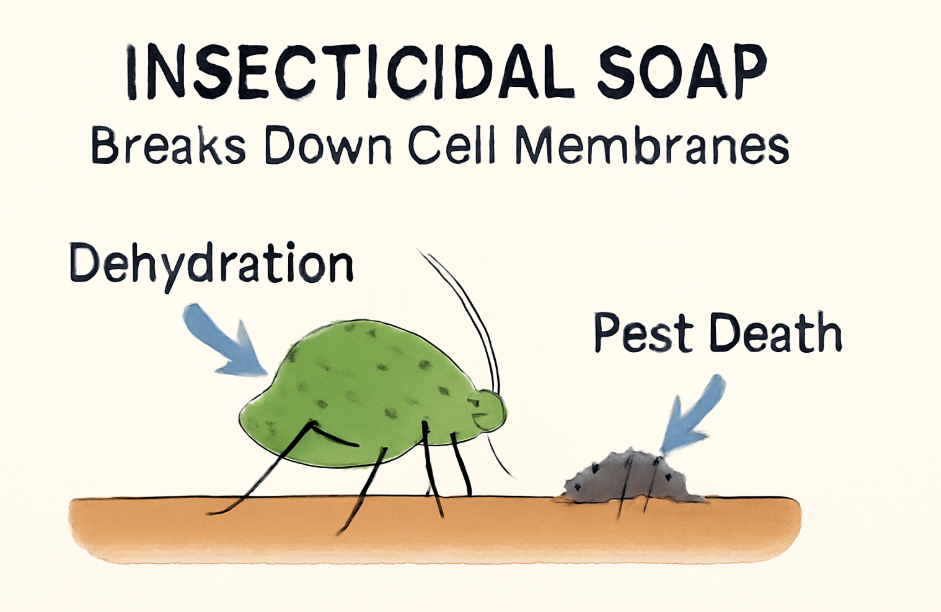
Targeting Soft-Bodied Insects
Insecticidal soap works by attacking the outer membranes of soft-bodied pests like aphids, mealybugs, and spider mites. These insects have a delicate outer layer that’s easily damaged by the soap’s active ingredients.
When sprayed onto the pests, the soap disrupts the cell membranes, causing the insects to lose moisture and eventually die from dehydration. This process doesn’t harm your plant, as it only affects the pests. 🪲
Why It’s Safe for Plants
Insecticidal soap is effective because it only targets pests with soft exoskeletons. This makes it safe for most indoor plants, including sensitive ones like succulents, orchids, and ferns. Unlike traditional pesticides, it doesn’t stay in the environment long, and it breaks down quickly, leaving no harmful residue behind. 🌱
Works Best on Contact
For insecticidal soap to work, it needs to come into direct contact with the pests. That’s why it’s essential to thoroughly spray all affected areas, including the undersides of leaves and stems, where pests often hide. The soap doesn’t have a residual effect, so you’ll need to reapply it every few days to ensure any new pests are eliminated.
Quick and Effective Results
In most cases, you’ll start seeing the results within a few hours after application. The pests begin to die off as their cells break down. However, for the best results, it’s important to repeat the application every 5-7 days for 2-3 weeks, depending on the severity of the infestation.
How to Use Insecticidal Soap on Indoor Plants
Using insecticidal soap on indoor plants is straightforward, but following the right steps ensures it’s both effective and safe for your plants. Let’s walk through the process so you can tackle those pesky pests with confidence! 🌱
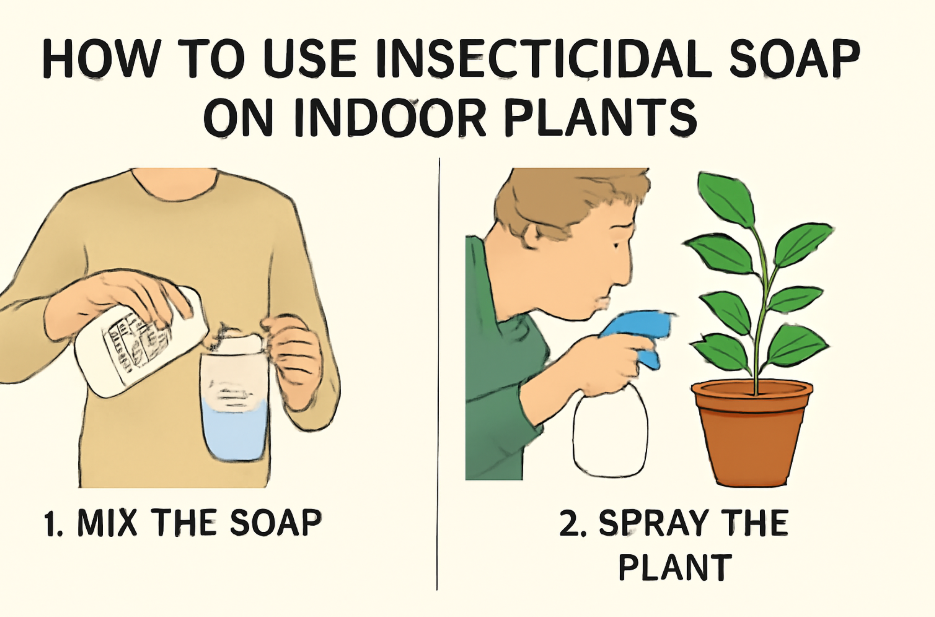
Step 1: Choose the Right Product
Not all insecticidal soaps are the same, so make sure you pick one that’s specifically designed for plant use. There are two main types:
- Ready-to-use sprays: These are convenient for quick application and require no mixing. Perfect for beginners! 💧
- Concentrates: If you want to save money or treat larger infestations, concentrates let you mix the soap at the right strength, but they require careful dilution.
Look for a product that lists potassium salts of fatty acids as the active ingredient for the best results.
Step 2: Prepare the Plant
Before you start spraying, take a few moments to prepare:
- Inspect for Pests: Check both sides of the leaves, stems, and even the soil for pests. If there’s a heavy infestation, gently remove some pests by hand or with a soft cloth.
- Water the Plant: If the plant is dry, water it first. Insecticidal soap is more effective when applied to damp plants, and watering beforehand helps prevent leaf burn. 💦
Step 3: Mix the Insecticidal Soap (if using concentrate)
If you’re using a concentrated product, follow the manufacturer’s instructions carefully to mix the soap with water. Typically, the ratio is about 2 tablespoons of concentrate per gallon of water, but always double-check the label for precise measurements.
Step 4: Apply the Soap
Now it’s time to spray:
- Cover All Areas: Using a spray bottle, apply a fine mist to both sides of the leaves, stems, and the top of the soil where pests may be hiding.
- Don’t Miss the Undersides: Many pests like spider mites and aphids tend to hide on the undersides of leaves. Be thorough to ensure you reach every potential hiding spot. 🌿
Step 5: Monitor and Repeat
After applying the insecticidal soap, check your plant every few days to monitor for pest activity. Reapply the soap every 5-7 days for up to 3 weeks to ensure the pests are fully eliminated and no new ones are emerging.
Tips for Safe and Effective Application
- Test a Small Area First: If you’re using insecticidal soap for the first time, test it on a small, inconspicuous part of the plant (like a single leaf) to make sure the plant doesn’t have a negative reaction.
- Apply in the Shade: Spray your plants during the cooler parts of the day, preferably in the morning or evening, to avoid burning the leaves in direct sunlight. ☀️
- Avoid Overuse: While insecticidal soap is safe, applying it too frequently or in high concentrations can stress your plant. Stick to the recommended application schedule for best results.
Benefits of Using Insecticidal Soap for Indoor Plants
Insecticidal soap is a go-to solution for indoor plant pests, and for good reason! It’s not only effective but also offers a variety of benefits that make it a top choice for gardeners. Let’s explore why this natural pest control method is a must-have for your plant care routine. 🌱
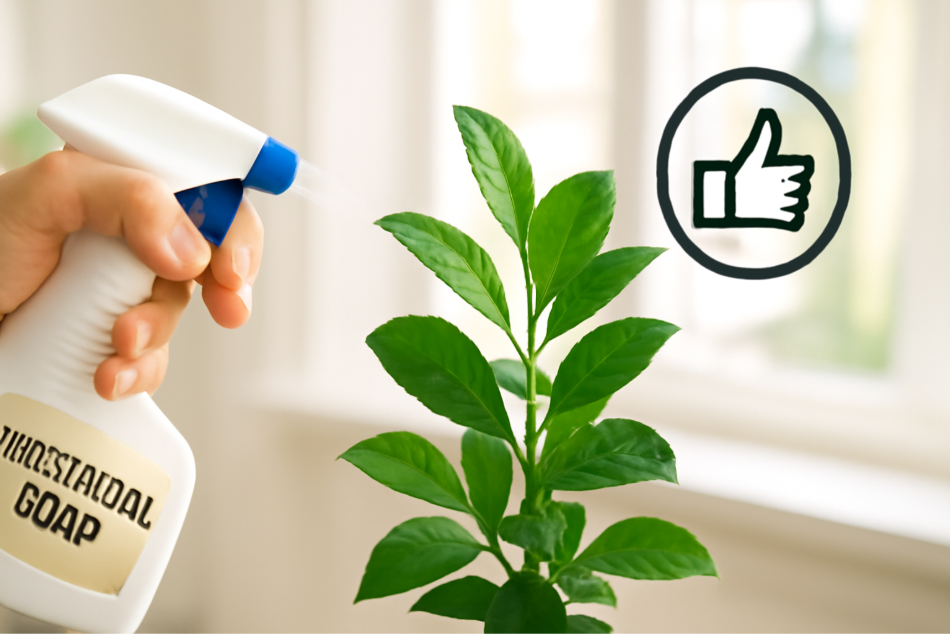
1. Safe for Your Plants 🌿
One of the biggest advantages of insecticidal soap is that it’s gentle on your plants. Unlike harsh chemical pesticides, insecticidal soap is safe for most indoor plants, including delicate varieties like orchids, succulents, and ferns. When used correctly, it won’t damage your plant’s leaves or soil, allowing them to stay healthy while pests are eliminated.
2. Non-Toxic to Humans and Pets 🐶👶
Insecticidal soap is non-toxic to humans, pets, and beneficial insects, making it a safer alternative for households with children and animals. Since it doesn’t contain harmful chemicals, you can use it without worrying about exposure to toxic substances. This makes it an ideal choice for indoor environments where safety is a priority.
3. Environmentally Friendly 🌍
Insecticidal soap breaks down quickly and doesn’t leave harmful residues behind, making it eco-friendly. It targets pests without harming the environment, so you can treat your plants responsibly. This is a great option for eco-conscious gardeners who want to protect both their plants and the planet.
4. Effective on a Wide Range of Pests 🪲
Insecticidal soap is effective against a variety of common indoor plant pests, including:
- Aphids
- Mealybugs
- Spider mites
- Whiteflies
- Scale insects
This makes it a versatile tool for tackling multiple pest problems with one simple solution, saving you time and effort.
5. No Harm to Beneficial Insects 🐝
Unlike synthetic pesticides, which can harm pollinators and beneficial insects, insecticidal soap targets only the pests on your plants. Ladybugs, bees, and other helpful insects won’t be affected, allowing your indoor garden to continue thriving in a balanced, natural environment.
6. Quick and Easy Application ⏱️
Using insecticidal soap is simple, with minimal prep and cleanup involved. Whether you’re dealing with a small infestation or a larger pest problem, you can apply it quickly with a spray bottle. Plus, it acts fast—most pests begin to die off within hours of contact, and you’ll see results in no time.
7. Prevents Future Infestations 🔄
When used regularly, insecticidal soap can help prevent new pests from taking over your plants. By treating your plants at the first signs of pests, you create a barrier that reduces the chances of reinfestation. This makes it a great part of an ongoing plant care routine.
Common Mistakes to Avoid When Using Insecticidal Soap
While insecticidal soap is a simple and effective solution, using it incorrectly can lead to less-than-ideal results. To make sure you’re getting the most out of this natural pest control method, let’s go over some common mistakes to avoid. 🌱
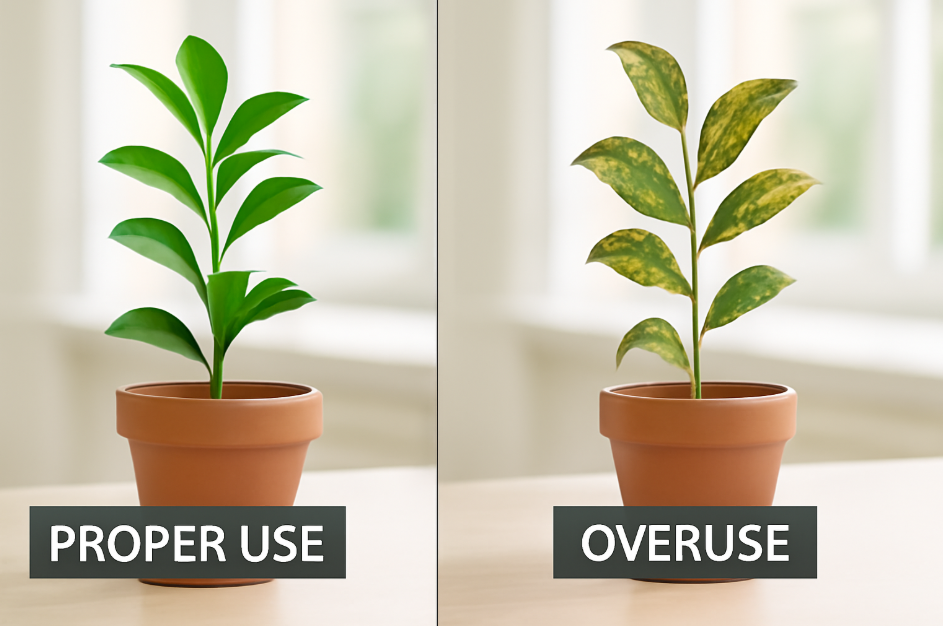
1. Overusing the Soap
It might be tempting to apply insecticidal soap too frequently, but overuse can stress your plants. Excessive applications can lead to leaf burn or disrupt your plant’s natural balance. Stick to the recommended schedule, usually applying every 5-7 days until the pests are gone. ✅
2. Using Too Strong a Concentration
If you’re using a concentrated insecticidal soap, it’s important to follow the dilution instructions carefully. Using too much soap in the mixture can damage your plant. Remember, a mild solution is more than enough to target pests. If in doubt, it’s safer to err on the side of a weaker mix. 🌿
3. Applying in Direct Sunlight
Applying insecticidal soap when the sun is shining directly on your plant can cause leaf burn. The soap, combined with the heat, may damage the leaves. It’s best to apply the soap early in the morning or later in the evening when the plant is not under the intense heat of the sun. 🌞
4. Neglecting to Test First
Before spraying your plant with insecticidal soap for the first time, it’s important to test a small area. This is especially important for sensitive plants. Choose a single leaf or stem and apply the soap there first. Wait 24 hours to see if any damage occurs. This simple step helps ensure that your plant will tolerate the treatment. 🌿
5. Forgetting to Cover the Undersides of Leaves
Many pests, such as spider mites and aphids, like to hide on the undersides of leaves. If you don’t spray these areas thoroughly, you may miss pests and leave the problem unresolved. Be sure to cover every surface, including the tops and bottoms of the leaves, stems, and even the soil if needed. 🪲
6. Using Insecticidal Soap on Stressed Plants
If your plant is already under stress—whether from recent repotting, overwatering, or lack of light—avoid using insecticidal soap right away. A stressed plant may be more vulnerable to damage, so give it some time to recover before applying the soap. Healthy plants are much more likely to withstand pest treatment without negative side effects. 🌱
7. Not Reapplying as Needed
Insecticidal soap doesn’t have a long-lasting effect, so reapplication is key. If you stop treatment too soon, pests may return. Be sure to follow the recommended reapplication schedule—usually every 5-7 days—until the infestation is completely gone.
Alternatives to Insecticidal Soap
While insecticidal soap is a great choice for pest control, it’s not the only option out there. If you’re looking for different ways to keep your indoor plants pest-free, here are some effective alternatives that can help tackle common plant pests. 🌿
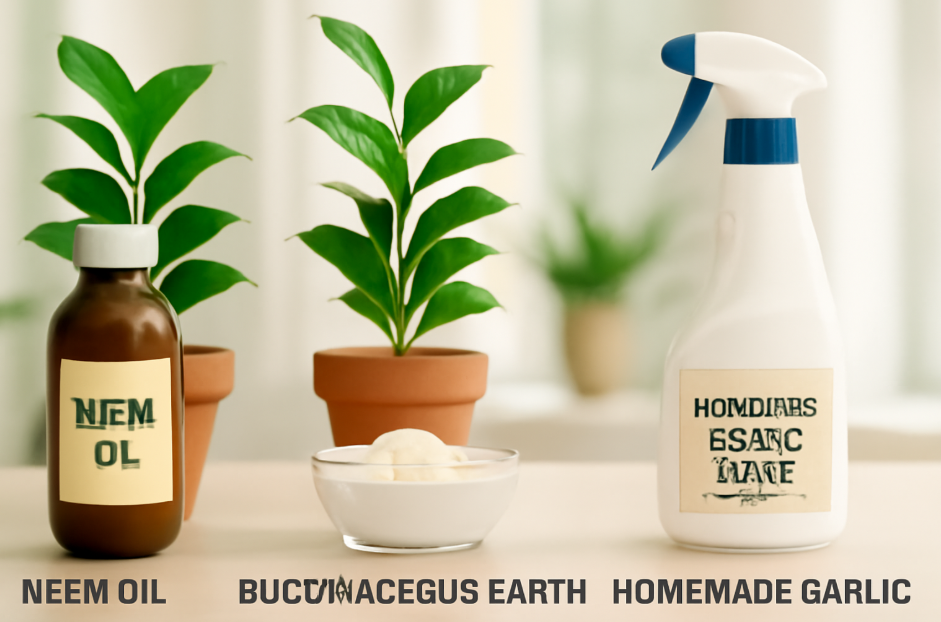
1. Neem Oil
Neem oil is a natural pesticide derived from the neem tree, and it’s highly effective against a wide range of pests, including aphids, mealybugs, and spider mites. 🌱
- How it works: It disrupts the feeding and reproductive systems of insects, preventing them from multiplying.
- How to use: Mix neem oil with water (according to the product instructions) and spray it on your plants, focusing on pest-infested areas. It’s safe for most plants and can be used both as a preventive measure and to treat active infestations.
2. Diatomaceous Earth
Diatomaceous earth (DE) is a powder made from the fossilized remains of tiny organisms called diatoms. It’s a natural and non-toxic option for controlling pests like ants, cockroaches, and beetles. 🪲
- How it works: DE works by physically damaging the exoskeletons of insects, causing them to dehydrate and die.
- How to use: Lightly dust the surface of the soil and any areas where pests are present. Just be sure to avoid inhaling the powder, as it can be irritating to your lungs.
3. Organic Insecticidal Sprays
There are several commercial organic insecticidal sprays available that use natural ingredients, such as garlic, rosemary, or peppermint oil, to repel and kill pests. 🌿
- How they work: These sprays generally act as repellents, causing insects to avoid your plants. Some even have pesticidal effects.
- How to use: Follow the manufacturer’s instructions for mixing and application. These sprays are easy to use and usually safe for most indoor plants.
4. Homemade Garlic or Hot Pepper Spray
For a DIY option, a simple garlic or hot pepper spray can help keep pests at bay. These ingredients are natural and can be easily found in your kitchen. 🧄🌶️
- How it works: Both garlic and hot peppers have strong smells and compounds that pests find unpleasant and irritating.
- How to make: Blend a few garlic cloves (or hot peppers) with water, strain the mixture, and pour it into a spray bottle. Apply it to the affected areas of your plants. This solution can be reapplied every few days until the pests are gone.
5. Predatory Insects
If you want a biological solution, consider introducing predatory insects to your indoor garden. 🐞
- Beneficial insects: Ladybugs, predatory mites, and lacewings feed on pests like aphids, mealybugs, and spider mites.
- How to use: You can buy these beneficial insects online or at some garden centers. Simply release them in the areas of your home where pests are most active. This natural pest control method can help maintain a healthy balance in your indoor garden.
6. Rubbing Alcohol (Isopropyl Alcohol)
Rubbing alcohol is another simple, DIY solution that works well for pests like mealybugs and aphids. 🧴
- How it works: Alcohol dries out the pests and can kill them on contact.
- How to use: Dilute rubbing alcohol with water (typically 1 part alcohol to 3 parts water) and spray it directly onto pests. Be careful when using it on sensitive plants, as alcohol can burn the leaves if over-applied.
Preventing Future Pest Infestations
Once you’ve successfully eliminated pests from your indoor plants, the next step is to prevent future infestations. Keeping pests away is easier than you think with a few simple, proactive steps. Here’s how you can protect your plants and maintain a pest-free indoor garden. 🌱
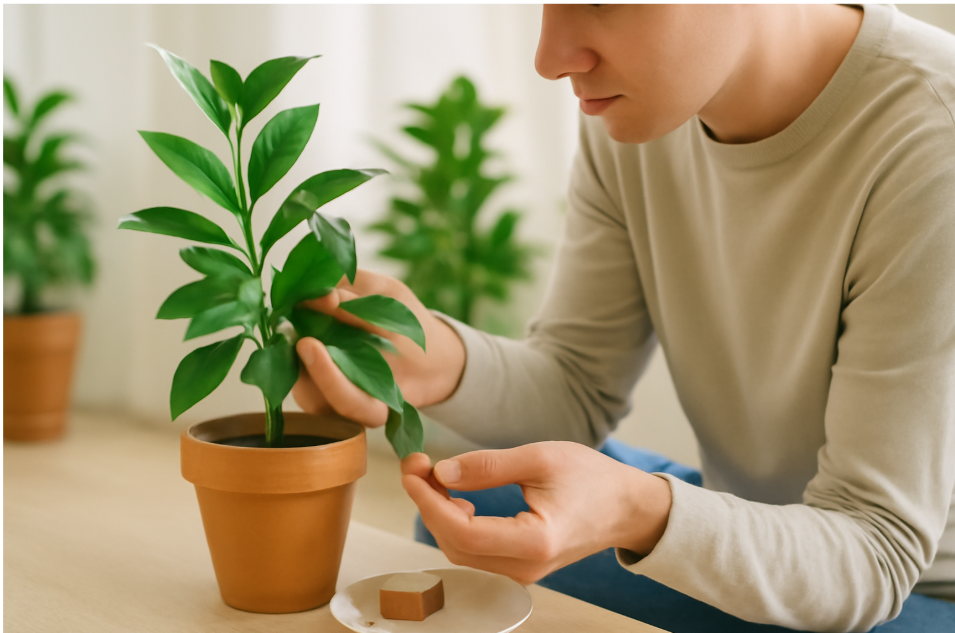
1. Regular Plant Inspections
Make it a habit to check your plants regularly for any signs of pests. Early detection is key to preventing a full-blown infestation. Look for:
- Discolored or damaged leaves 🧐
- Visible bugs or webs
- Sticky residues or honeydew
By inspecting your plants every few weeks, you can catch problems before they spread.
2. Isolate New Plants
When adding new plants to your collection, quarantine them for a week or two before introducing them to your other plants. This ensures they don’t carry any pests into your home. 🪴 Keep them in a separate area and check for any signs of pests before mixing them with your existing plants.
3. Maintain Proper Care
A healthy plant is better equipped to fight off pests. 🌿 Focus on:
- Proper watering: Avoid overwatering, which can create ideal conditions for pests.
- Good air circulation: Keep your plants in a well-ventilated area to reduce humidity, which pests like.
- Adequate light: Ensure your plants are getting the right amount of light for their needs, as weak plants are more prone to pest attacks.
4. Keep Your Plant Area Clean
Pests love hiding in clutter, so keeping your plant space clean is essential. 🧹 Regularly remove fallen leaves, dust off surfaces, and wipe down plant pots. This not only keeps pests at bay but also ensures your plants have room to grow.
5. Use Natural Pest Deterrents
Incorporating natural pest repellents into your plant care routine can help keep pests away. Here are a few options:
- Essential oils: Peppermint, eucalyptus, and citronella oils act as natural deterrents for many pests.
- Cinnamon: Sprinkling cinnamon on the soil can deter pests like ants and fungal gnats.
- Neem oil: Using neem oil regularly can help prevent pests from returning, as it disrupts their life cycle.
6. Properly Dispose of Infested Plants
If a plant becomes heavily infested and can’t be saved, it’s best to dispose of it immediately to prevent pests from spreading to other plants. Make sure to dispose of it outside, away from your indoor garden, and clean any tools or surfaces that may have come into contact with the infested plant.
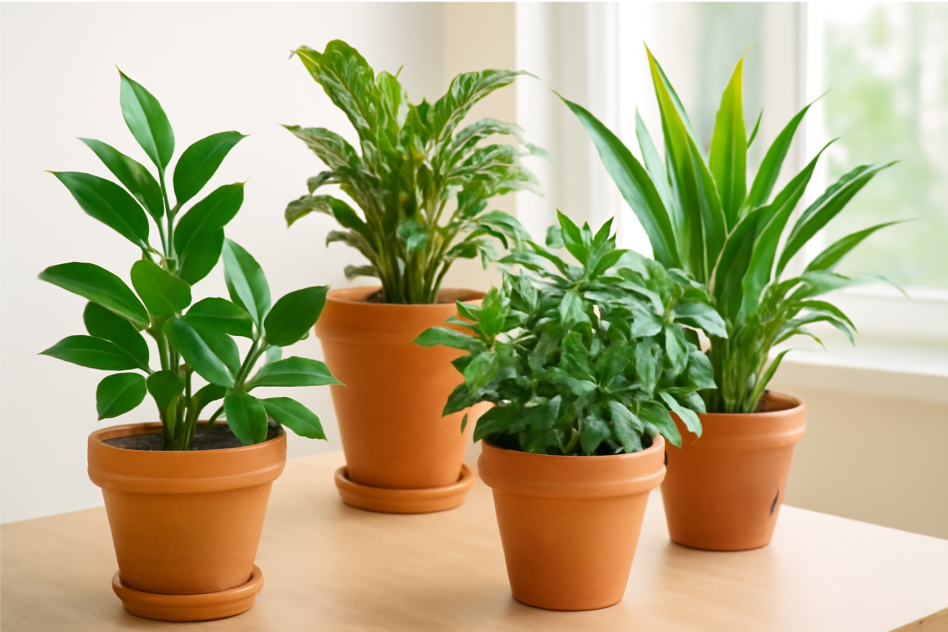
Keeping your indoor plants healthy and pest-free doesn’t have to be a challenge. By using insecticidal soap on indoor plants, you can effectively tackle common pests without harming your plants or the environment. Whether you’re dealing with aphids, spider mites, or mealybugs, insecticidal soap offers a safe, eco-friendly solution that’s gentle on your greenery. 🌱
Remember, prevention is just as important as treatment. By inspecting your plants regularly, maintaining proper care, and using natural deterrents, you can significantly reduce the chances of future infestations. With a little attention and the right tools, your indoor garden will thrive and stay pest-free all year long. 🌿
Armed with the knowledge from this guide, you’re now ready to confidently manage pest problems and keep your plants flourishing. 🌸 Ready to start protecting your indoor garden? Let’s get to work—your plants will thank you! 😊
FAQs: Using Insecticidal Soap on Indoor Plants
1. Can insecticidal soap harm my indoor plants?
Insecticidal soap is generally safe for most indoor plants when used correctly. However, it’s important to follow the instructions and test a small area first to ensure your plant doesn’t have an adverse reaction. Overuse or applying it in direct sunlight can potentially damage plants. 🌿
2. How often should I use insecticidal soap on my indoor plants?
Apply insecticidal soap every 5-7 days until the pest infestation is under control, typically for 2-3 weeks. Regular reapplications ensure any new pests are eliminated and prevent reinfestations. 🌱
3. Is insecticidal soap safe for pets and children?
Yes, insecticidal soap is non-toxic to pets and children when used as directed. It’s a safer alternative to chemical pesticides, making it a great choice for households with pets or little ones. 😊
4. Can insecticidal soap be used on all types of plants?
Insecticidal soap is safe for most indoor plants, including succulents, ferns, and orchids. However, some sensitive plants may not tolerate it well, so it’s best to test it on a small area first before applying it to the entire plant. 🌸
5. How long does it take for insecticidal soap to work?
Insecticidal soap typically starts showing results within hours of application. Pests will begin to die as the soap disrupts their cell membranes, but repeat applications may be needed to completely eliminate the infestation. 🪲
6. Can I use insecticidal soap on plants with flowers?
Yes, insecticidal soap is safe for flowering plants as long as you follow the instructions and apply it correctly. Just be cautious about applying it during the blooming phase to avoid damaging delicate flowers. 🌼
7. Can insecticidal soap kill all pests?
Insecticidal soap is most effective against soft-bodied pests like aphids, spider mites, mealybugs, and whiteflies. However, it may not work as well on hard-shelled pests like beetles. For other pests, consider using alternative treatments like neem oil. 🐞
8. Should I wash off insecticidal soap after applying it to my plants?
No, you don’t need to wash off insecticidal soap after applying it. It works by coming into direct contact with pests, so leaving it on the plant will continue to have an effect. Just avoid applying during heavy rain or excessive moisture. 🌧️
